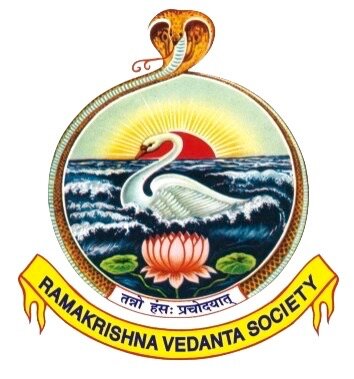The Sunday morning programs at the Vedanta Society in Boston are called Satsang and, once a month, Antar Yoga. The two programs are essentially identical, comprising prayer, meditation, music and reflection, except that on Antar Yoga Sundays, we have more music, more interludes for meditation, and more reflective readings presented by members.
What is the thinking behind calling these programs “Satsang” and “Antar Yoga”?
Satsang is a combination of two Sanskrit terms: Sat, meaning that which is real and true, and saṅg (pronounced “sung”), which means being in company or being associated with something or someone. Put together, Satsang means being in the company of one who is real and true, which is probably the best way to describe God, who is essentially indescribable. God is the being who is real and who is true. Which is another way of saying that God is the infinite being, the only reality that is true. The Satsang provides an opportunity to think, to pray, to reflect, to sing—everything directed toward the Divine in the various ways we tend to think of God, personal and impersonal, immanent and transcendent.
Antar Yoga also is a combination of two Sanskrit terms: antaḥ, meaning inner or directed inward, and yoga, meaning concentration or union (derived from two distinct Sanskrit roots yuj samādhau and yujir yoge). Put together, Antar Yoga means concentrating inward or joining with the inner (self). The purpose of prayer, devotional music, reflection, and meditation is to help us withdraw the mind from the perishable material world we encounter outside and to direct it to the inner, imperishable self, the Divine dwelling in our hearts.
Satsang provides us an opportunity to reflect on the spiritual ideal. Antar Yoga gives us an opportunity to direct our attention inward to the true self. The two—Satsang and Antar Yoga—go together. Reflection (manana) and interiority (antarmukhatā) provide the right environment in which prayer and meditation can thrive.
While this occurs on Sundays at the Vedanta Society, this is clearly not meant to be merely a once-a-week activity. In one form or another, both Satsang and Antar Yoga should ideally become a part of our daily practice. Study of spiritual texts, seeking holy company for spiritual discussions or for devotional singing, doing pilgrimages to places of worship, finding opportunities to serve in the spirit of karma yoga—these are some of the ways in which Satsang can become both a personal and collective activity. The daily practice of deep reflection, prayer, worship, and meditation is the Antar Yoga every one of us can have on our own.
Our inward journey will end when we experience in the depths of our being the core of existence, which is real and true (sat), which is consciousness itself (cit), and which is the source of all bliss (ānanda). Call this experience by any name—salvation, liberation (mukti or mokṣa), nirvāṇa, God-realization. No matter how each is described in different texts, they all point to the identical experience of transcending our present idea of the self (as bound, mortal, weak, and imperfect) and experiencing the self as it truly is (free, immortal, blissful, and perfect).
When we know who we truly are and never go back to our old ways of ignorant living, both Satsang and Antar Yoga will have served their purpose.

